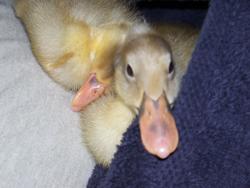but i do lack a very specific set of skills
In my opinion, John wick lashed out because of grief from the passing of his wife not the death of his dog or theft of his car. She died unexpectedly and without reason. There was nothing he could do and no one to blame, left only with his grief and sense of loss. Until suddenly there wasn’t. With the death of the dog, his wife’s last gift to him, there was someone to blame and something he could do. He could get justice. John didn’t kill to get revenge, he murdered those people because of the overwhelming grief he was sinking in and unable to properly deal with. The people he killed were unrelated to the reason he was killing. In that way John is the same as the cocky kid who killed a dog because he felt hurt.
that’s a good analysis. honestly i didn’t give it much thought
I would die for kitty. Barring that, I might inflict grievous bodily harm on anyone who threatens him.
Now I’m curious what constitutes a success in a lethal battle for food given that the best rate for a cat is 60%
The science folks document attacks that succeed and those where the prey escapes (possibly wounded, but still not a meal). Here’s a PDF on some hawk rates – it is just a few pages from a larger work. Excerpt:
Relatively high successrates of 89 and 82% have been documented for the fish-eating Osprey (Pundion haliuetus)in Europe (Brown and Amadon
- and North America (Ueoka and Koplin 1973). Success rates of 33- 65% have been reported for the insectivorous and rodent-eating American Kestrel (F. spurverius),depending upon season, prey type, and geography (Jenkins 1970, Sparrowe 1972, Rudolph 1982, Collopy and Koplin 1983). Various success rates have been reported for raptors that feed mostly upon mammals, but supplement their diets with birds and reptiles. Mader (1975) documented a rate of 16% for Harris’ Hawks (Purubuteo unicinc- tus). Wakeley (1978) reported that Ferruginous Hawks (Buteo regulis) were successful 17% of the time in Idaho. Orde and Harrell(l977) reported a successrate of 79% for Red-tailed Hawks (Buteojumuicensis) in South Dakota. Nesting Golden Eagles (Aquilu chrysuetos)in Idaho were suc- cessful on 20% of their capture attempts (Collopy 1983). Clark (1975) calculated a success rate of about 20% for the rodent-specializing Short- eared Owl (Asioflammeus).





